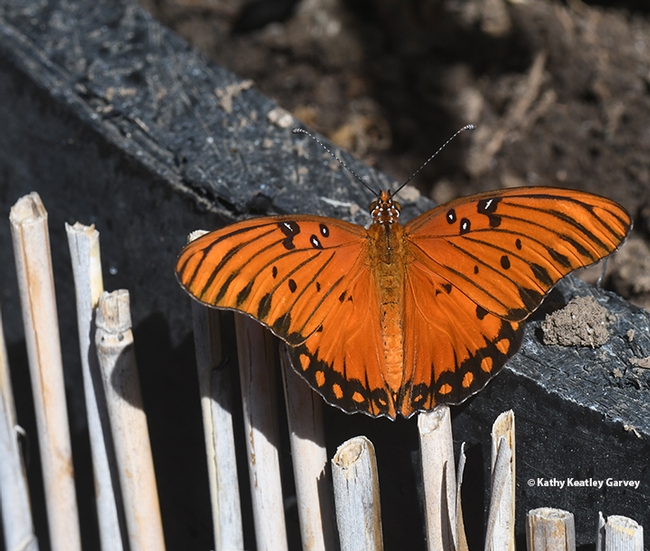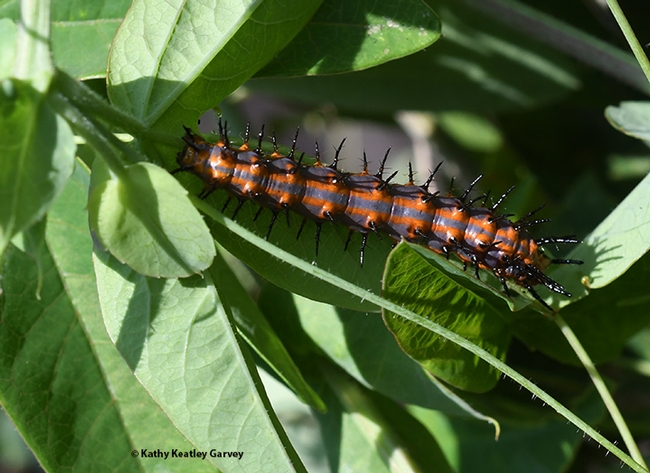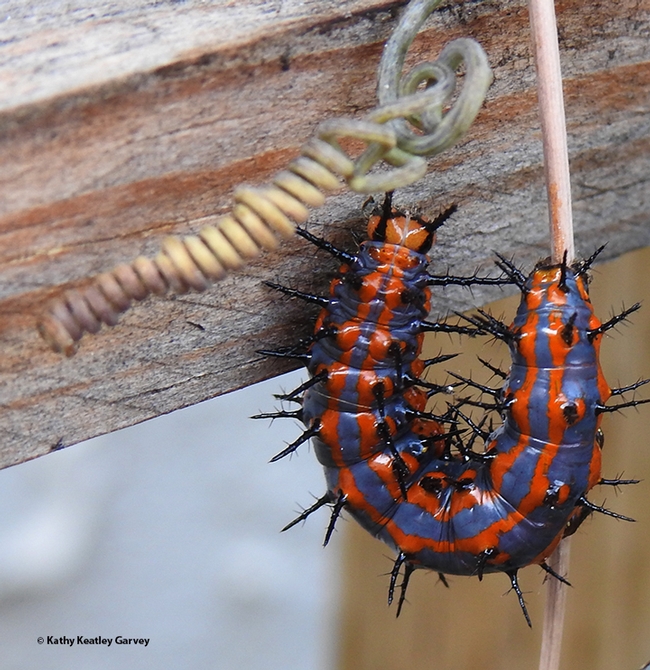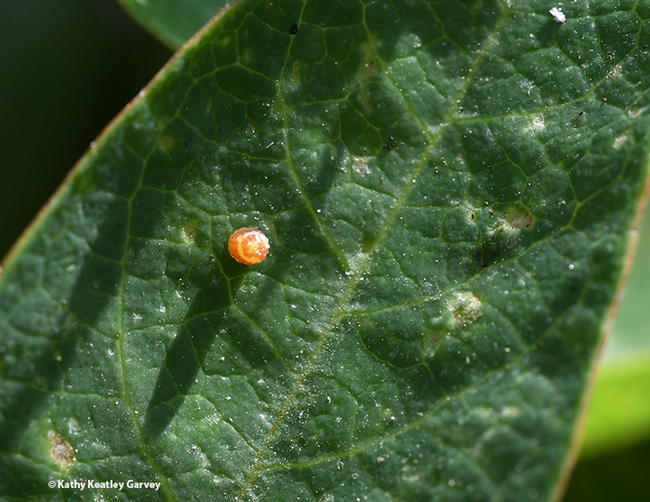Gulf Fritillaries in November?
Yes!
Gulf Fritillaries (Agraulis vanillae) are still active here in Solano County, on those warm, sunny afternoons that defy the season.
They're still hanging around their host plant, Passiflora (passionflower vine), "looking for love" (thank you, Johnny Lee). And in all the RIGHT places.
The orange-reddish butterfly, with its silver-spangled underwings, was introduced into southern California in the 19th century, in the vicinity of San Diego in the 1870s, according to butterfly guru Art Shapiro, UC Davis distinguished professor of evolution an ecology. It was first recorded in the Bay Area before 1908. "It became a persistent breeding resident in the East and South Bay in the 1950s and has been there since." Once prevalent in the Sacramento area in the 1960s, it "seems to have died out by the early 1970s," he says. Then in 2009, it began making a comeback in the Sacramento area.
In our pollinator garden, the Gulf Frits usually skeletonize the plant. They eat the leaves, flowers, the fruit, and then start in on the bark.
Not so this year. What's different? More predators, including California scrub jays, wasps and a resident praying mantis.
The resident mantis perished a month after depositing her egg case. The wasps vanished. And the California scrub jays, eyed by circling hawks, are nowhere to be seen.
Just the Gulf Fritillaries--their eggs, caterpillars, chrysalids and adults--remain.
Gulf Fritillaries in November? Yes.
Attached Images:

A Gulf Fritillary spreads its wings. (Photo by Kathy Keatley Garvey)

A hungry Gulf Fritillary caterpillar crawling around the Passiflora. (Photo by Kathy Keatley Garvey)

U Turn? A Gulf Fritillary caterpillar in action. (Photo by Kathy Keatley Garvey)

This Gulf Fritillary egg is about to hatch. (Photo by Kathy Keatley Garvey)